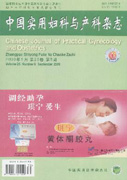Abstract:Amniotic fluid embolism is a serious complication in obstetrics,which can not be predicted and prevented.Diagnosis of amniotic fluid embolism is a clinical problem,which is based on the rapid assessment and judgment of the bedside,emphasizing the comprehensive and detailed exclusive diagnosis.After the occurrence of amniotic fluid embolism,rescue should focus mainly on support and symptomatic treatment.Prompt diagnosis and proper supportive treatment can improve the prognosis of patients with amniotic fluid embolism.

